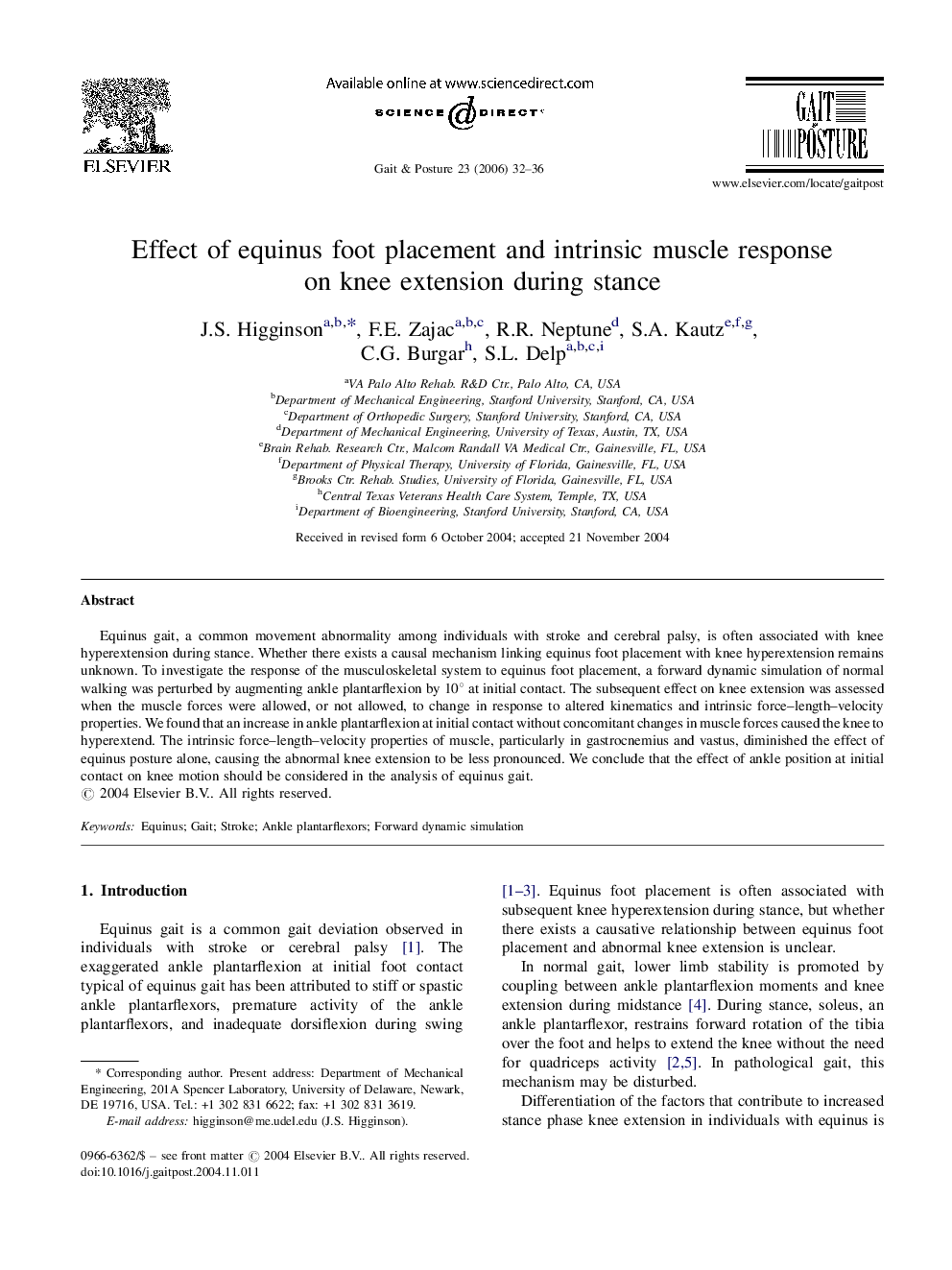| Article ID | Journal | Published Year | Pages | File Type |
|---|---|---|---|---|
| 4058565 | Gait & Posture | 2006 | 5 Pages |
Equinus gait, a common movement abnormality among individuals with stroke and cerebral palsy, is often associated with knee hyperextension during stance. Whether there exists a causal mechanism linking equinus foot placement with knee hyperextension remains unknown. To investigate the response of the musculoskeletal system to equinus foot placement, a forward dynamic simulation of normal walking was perturbed by augmenting ankle plantarflexion by 10° at initial contact. The subsequent effect on knee extension was assessed when the muscle forces were allowed, or not allowed, to change in response to altered kinematics and intrinsic force–length–velocity properties. We found that an increase in ankle plantarflexion at initial contact without concomitant changes in muscle forces caused the knee to hyperextend. The intrinsic force–length–velocity properties of muscle, particularly in gastrocnemius and vastus, diminished the effect of equinus posture alone, causing the abnormal knee extension to be less pronounced. We conclude that the effect of ankle position at initial contact on knee motion should be considered in the analysis of equinus gait.
